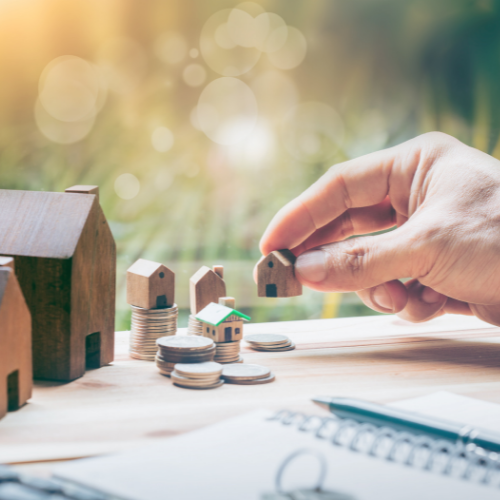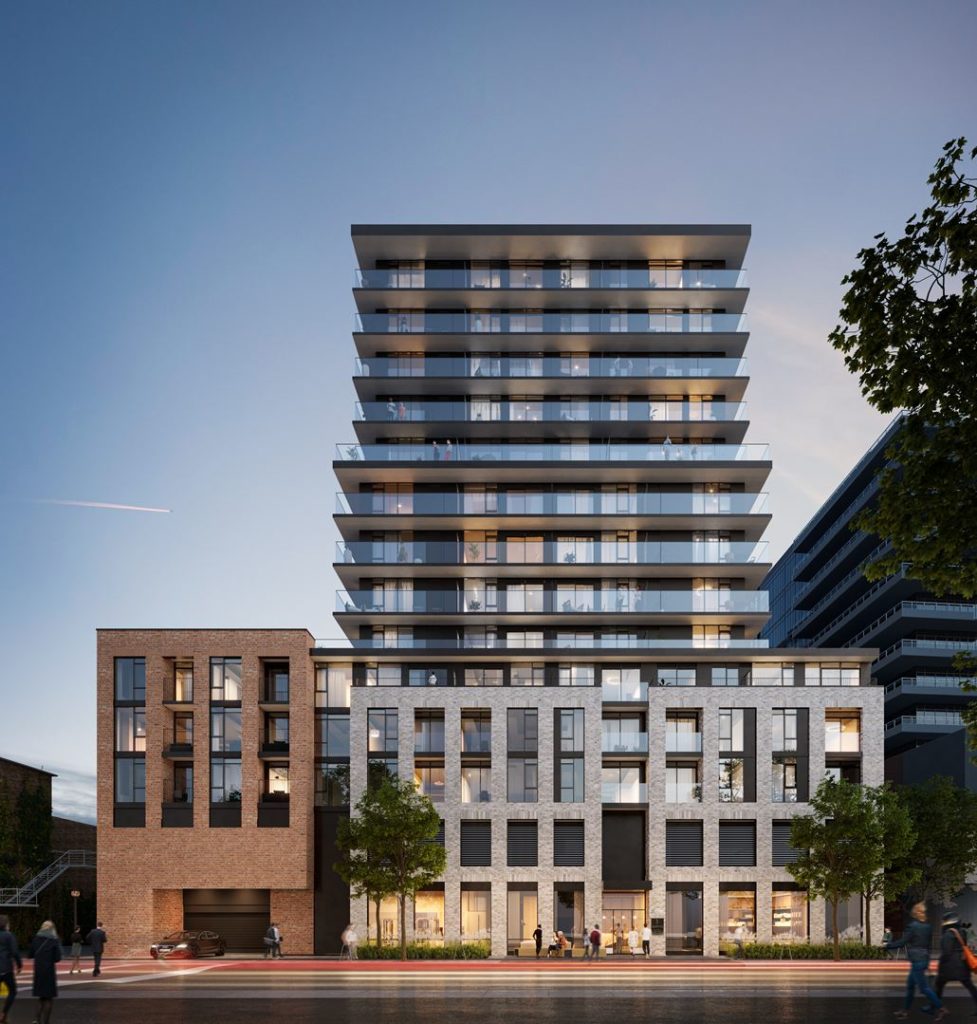
10.27.2021
Everything You Need to Know About Investing in a Toronto Condo A Step-by-Step Guide
Investing
You’re ready to make a condominium investment in the City of Toronto. Maybe this is your first-ever real estate investment, or perhaps you’re shifting gears from houses to condos. Whatever your specific situation, you’re looking in the right direction.
Condo investments in Toronto have done extremely well, particularly over the last decade. They continue to show projected strength in the months and years ahead for many reasons including affordability, population growth, stable city market, low vacancy rates, and high rents, and location in a top global city that is only positioned to advance further as time goes on.
What’s the best neighborhood?
Which condo-buying criteria should you focus on the most?
Are there certain characteristics that raise the value of a condo over time?
What taxes are you subject to?
This Toronto condo investment guide is designed to answer your questions and steer you in the direction of smart and informed real estate investing.
KNOW YOUR STUFF AND HAVE A PLAN
Purchasing a property as an investment is significantly different from acquiring a principal residence. Make yourself aware of those differences so there are no surprises once you dive in with both feet.
STEP 1: Educate yourself on taxes.
If you’re planning to have a rental property, you need to know that Canadian tax law classifies rent as income, and therefore, it’s subject to income tax. Tenant or not, the value of your property is also subject to a type of tax called capital gains tax. This means if your investment property increases in value from the day you purchased it to the day you sell it, the spread is taxable.
STEP 2: Get a mortgage preapproval.
Acquiring a mortgage on an investment property is a little more complicated than that for a primary residence. Anticipate at least a 20% down payment, and it might go as high as 50% for a commercial property. Keep in mind, even if it’s a rental property, only a portion of your rent income will factor into your qualifications for a mortgage.
STEP 3: Define your goals.
There are different ways to invest in real estate and various business models to consider.
What’s your cash flow?
For example, on your condo rental property how much money is left over after your tenant pays rent and you pay all the expenses associated with owning the property? In Toronto, it’s possible but not easy to run a cash flow positive property. Having said that, there are many factors that can play a role in helping you achieve this including your down payment amount, mortgage interest rate and monthly payments, utilities, and condo maintenance fees.
What’s the projected appreciation?
If you buy a condo today and plan to hold it for 10 years, how much will it appreciate between now and then? That figure represents your profit (less capital gains tax and closing fees).
How much equity will you build?
After you purchase your condo, as you or your tenant pays down your mortgage you are simultaneously building equity in the property. If you hold that property for 25 years and apply the rent to the mortgage, you’ll own the condo free and clear.
STEP 4: Be realistic.
Don’t mistake the real estate market for a “get rich quick” scheme. It’s very risky to bank on making a significant profit in the short term. Instead, build in long-term objectives.
STEP 5: Decide on the type of investment you want to make.
There are different ways to invest in a condo in Toronto. Weigh your options and see which best suits you and your goals.
- Buy pre-construction. This is when you purchase a condo directly from the builder and it hasn’t yet been built.
- Buy to flip. This is when you purchase a condo with a plan to renovate and sell it immediately afterward, at a higher price.
- Buy to rent. This is when you purchase a condo to become a landlord with a plan to rent it out.
STEP 6: Calculate the projected Return on Investment (ROI).
You’re making an investment in order to earn money. Depending on the type of condo investment you choose, there are different ways to calculate your ROI.
- Cash flow = income – operating expenses – financing costs
How much money are you profiting from your investment each month?
- Capitalization rate (cap rate) = net operating income / property purchase price
Setting aside the mortgage and financing, what is the actual value of the property?
- Return on investment = net income (gross income – costs) / costs
What is the performance of your investment property?
Note: There are variations in ROI calculations, depending on how you purchased the property and what type of investment it is, but these are a great starting point.
WHEN YOU INVEST IN A PRE-CONSTRUCTION CONDO
Particularly in the City of Toronto, where new condo developments seem to be in the works all the time, it’s an attractive investment option. Part of what makes a pre-construction condo purchase so desirable is the presumption that when you make the purchase, the price per square foot is lower (since it hasn’t yet been built) than what it will be when the tower is fully constructed.
STEP 1: Choose a reputable builder.
This is one of the most important parts of buying pre-construction. You must be sure that you’re working with a good builder who has a reputation for quality and reliability, completing projects on time (and not canceling), and not raising maintenance fees once the condo is built.
STEP 2: Prioritize location.
When you’re buying something that doesn’t yet exist, one of the smartest things you can do is make sure that when it does exist, it will be situated in a great part of the city. When the location is good, there’s a better chance of solid appreciated value, easy reliability, and profitable resale.
STEP 3: Think layout, use of space, and overall marketability.
Take a look at the builder’s various unit layouts. If this will be a rental property, be sure to choose a unit that most people will enjoy. Think about the type of renter you want to attract (single, couple, family) and choose a design that best fits that profile.
STEP 4: Develop a business model.
Plan ahead and know what you’re getting into. If you plan to rent the condo, check current market rents and calculate your anticipated cash flow. If you plan to sell the condo upon completion, look at all your options, remember closing costs and calculate accordingly to make sure it’s worth your while.
STEP 5: Calculate carrying costs and be prepared to pay interim occupancy fees.
There will inevitably be carrying costs and interim occupancy fees that you must absorb, either while you find a tenant or while you’re waiting to sell. Carrying costs are all the expenses you incur to own the property (mortgage, utilities, etc.) and occupancy fees are those charged to you as your floor becomes fully constructed but before the building is complete (think of this as rent you pay to the builder before your unit is allowed to be mortgaged).
STEP 11: Be prepared to pay HST upon closing (with eligibility for a rebate afterward).
It’s easy to miss, forget about or overlook, but on a pre-construction Toronto condo investment purchase, you must pay HST upon closing. At 13%, this is no small sum. If and when you solidify a tenant, you can apply for the rebate.
STEP 12: Know about the possibility of an assignment.
Depending on the builder and the Purchase and Sale Agreement, you may have an assignment clause that gives you the option to sell the condo prior to completed construction. In other words, you never take full possession and rather sell the unit on assignment prior to your closing date.
WHEN YOU INVEST TO FLIP
Flipping may sound like a simple concept, but it is anything but easy to perform successfully. While it can be highly lucrative, there are many moving parts you must be prepared for including financing, budgeting, renovating, staging, marketing and selling.
STEP 13: Know your financing options.
There is a range of loan types to help you finance your buy and flip investment condo. Look into home equity lines of credit, private mortgages, and home renovation and improvement loans.
STEP 17: It’s all about the numbers.
Calculate, estimate and plan. While number crunching is always a critical part of the project, in a fix-and-flip scenario it’s even more so. Consider the purchase price, quoted renovation costs, and resale value afterward.
STEP 14: Focus on choosing a good building, in a good neighborhood.
In order for your flip to be highly profitable, it’s essential that you find the right building, with the right unit, at the right price, to do the right renovations, to then be re-sold at the right time. Work with a real estate agent who’s familiar with your investment model and who can guide you throughout the process – from the purchase to the reno planning, to the resale.
STEP 14: Plan your reno.
Spend the amount of money necessary to raise the value of the condo in all the ways that matter most. Think floors, appliances, countertops, sinks, cabinetry, vanities, showers, tubs, and fresh coats of paint. As you plan, try to strike the perfect balance between quality and price.
STEP 15: Budget extra time and money (the job is always bigger than you think).
Allot for more time, more budget, and more unforeseen expenses – that’s just the nature of the beast. Every reno-and-flip investment you make should have an “extra fund” from which you can pull to pay for expenses that pop up.
STEP 16: Research potential resale value.
Know what you can sell the condo for once your renovation is complete. Be sure this number aligns with your business model and profitability plan. At the end of the day, you’re doing this to make money, so the project needs to make sense financially. If the numbers aren’t adding up, find a new property and a new renovation.
WHEN YOU INVEST TO MAKE IT AN INCOME PROPERTY
An income property investment puts you in the landlord seat, collecting rent from your tenant which you then use to pay your mortgage as your condo builds equity and appreciates in value over time.
STEP 18: Carefully choose the building, the unit layout, the view, and the neighborhood.
Now you need to think like a renter. Choose a building in a prime location, with a high walking score and close to amenities. Select a unit with a great layout that offers excellent use of the space. Be sure the condo is in a neighborhood where you have a good chance of landing a quality tenant.
STEP 19: Research the going rental rates for similar units in the area and crunch the numbers.
What are other condos like yours currently being rented for? Figure out your expected monthly rent and then crunch all the necessary numbers to determine whether you will break even each month, profit slightly or operate at a loss. Even at a slight loss, when it’s a long-term investment, you can still be profitable in the end because your condo appreciates in value.
STEP 20: Avoid a fixer-upper.
Unlike the fix-it-to-flip-it approach, what you don’t want in this case is a condo that needs a lot of work. On the contrary, find a unit that’s either new or very well maintained so that the process from purchase to rented is seamless, and you can start collecting rent and paying your mortgage as soon as possible.
STEP 20: Get ready to be a landlord.
Remember, you are the owner of your condo, and with that comes tremendous responsibility. Should something go wrong inside your unit, it’s up to you to attend to it immediately. When your tenant has a request, it’s your job to entertain it. If your tenant decides to leave, you’re the one that must find a replacement quickly, and in the meantime, cover the mortgage, utilities, and other expenses on your own.
Whatever your vision and goals as a real estate investor of condos in Toronto, when you’re educated and informed, you have a greater chance of success.
Take your time.
Talk to people.
Seek out advice from a few experts.
Figure out what type of investment suits you best and then do your due diligence to make sure you set yourself up for an optimized experience and the highest possible returns.
Would you like to speak with a Toronto condo expert in the investment space?
I’d be more than happy to have a conversation with you.



